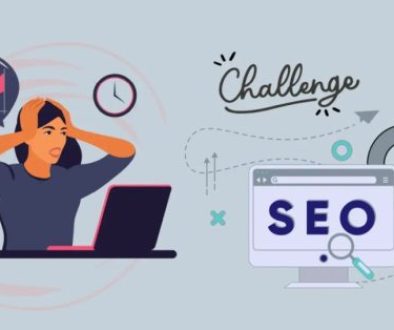Web Design in 2025: Creating User-Focused, Future-Ready Digital Experiences
In today’s hyper-digital world, a website is not just a digital brochure—it’s the beating heart of a brand’s online presence. Whether for businesses, artists, educators, or e-commerce, a well-designed website is a critical component of success. Web design in 2025 is about more than aesthetics—it’s about function, speed, accessibility, and user experience (UX). With evolving user expectations and technological advancements, the art and science of web design continue to grow in complexity and importance.
This article dives into the essentials of modern web design, emerging trends, best practices, and what designers must prioritize to build future-ready websites.
The Foundation: What Is Web Design?
Web design is the process of planning, conceptualizing, and arranging content online. Modern web design goes beyond aesthetics to include the website’s structure, usability, responsiveness, accessibility, and performance. A successful website must achieve several goals at once:
-
Represent the brand identity clearly
-
Engage and guide users efficiently
-
Be accessible and responsive across devices
-
Load fast and be SEO-friendly
-
Encourage desired user actions (conversions)
These criteria must be met through a combination of design tools, coding skills, and UX principles.
UX/UI: The Core of Every Web Design Strategy
User Experience (UX) and User Interface (UI) design have become inseparable from the web design process. While UI focuses on the visual and interactive elements—buttons, colors, typography—UX ensures that users can navigate and achieve their goals without friction.
Principles of Great UX/UI Design:
-
Clarity: Users should never feel lost.
-
Consistency: Uniform layouts, fonts, and navigation.
-
Feedback: Visual responses to user actions (e.g., hover effects, loading indicators).
-
Accessibility: Inclusive design for users of all abilities.
-
Mobile-First Thinking: With mobile traffic dominating, designs must be fluid across screen sizes.
In 2025, tools like Figma and Adobe XD are used not only for creating UI prototypes but also for collaborating in real-time on UX flows.
Responsive and Adaptive Design: Essential, Not Optional
As device types continue to diversify—from smartphones and tablets to foldables and smart TVs—responsive design is more critical than ever. Responsive websites adjust layout and functionality based on the user’s screen size and orientation, ensuring a seamless experience regardless of the device.

Best Practices for Responsiveness:
-
Use a flexible grid layout (CSS Grid, Flexbox).
-
Implement media queries to define styles for various screen widths.
-
Optimize images and use scalable vector graphics (SVGs).
-
Prioritize touch-friendly navigation.
Adaptive design, while more resource-intensive, allows for even greater customization by serving different layouts based on specific devices.
Web Design Trends Shaping 2025
Web design trends reflect the blend of technology, user expectations, and creative innovation. Here are the key design directions shaping websites this year:
1. Dark Mode and Low-Light UX
Increasingly preferred by users, dark mode is not just about style. It improves battery life on OLED screens and offers a more comfortable viewing experience in low-light environments.
2. Micro-Interactions
Subtle animations or effects triggered by user actions help provide feedback, delight users, and guide behavior. Examples include hover effects, toggle animations, and swipe transitions.
3. Minimalism with a Purpose
Less clutter and more focus. The trend emphasizes whitespace, clear typography, and intuitive layouts. This not only enhances aesthetics but also improves page load speeds and accessibility.
4. AI-Personalized Experiences
Websites now use AI to tailor content dynamically—product suggestions, layout variations, or even chatbot support tailored to individual users.
5. Scroll-Based Storytelling
Designers are embracing long-scroll pages to tell brand stories with parallax effects, dynamic sections, and animated elements.
Performance Matters: Speed and Optimization
Website speed is a crucial factor for user satisfaction and search engine ranking. In fact, 53% of mobile users abandon a site if it takes longer than 3 seconds to load.
Performance Optimization Tips:
-
Compress and optimize images (WebP, AVIF formats)
-
Minimize and bundle CSS/JS files
-
Use lazy loading for non-critical content
-
Enable browser caching and Content Delivery Networks (CDNs)
-
Avoid heavy themes and unnecessary plugins (especially in CMS platforms)
Design should never come at the cost of performance. Fast-loading sites not only retain users but also rank higher in search engine results.
Accessibility in Web Design
Inclusion is no longer optional. Accessibility ensures that users with disabilities can use websites effectively. In many regions, it’s also a legal requirement.
Key Accessibility Features:
-
Use semantic HTML and ARIA labels
-
Ensure sufficient color contrast
-
Add alt text to images
-
Enable keyboard navigation
-
Use descriptive link texts
Designers must test sites with screen readers and accessibility tools like WAVE and Axe to ensure compliance with WCAG standards.
Tools and Platforms for Web Designers
Modern web design is supported by a suite of powerful tools and platforms. Whether you’re designing visually or working directly with code, these tools streamline the process:
-
Figma / Adobe XD / Sketch – UI/UX design and prototyping
-
WordPress / Webflow / Shopify – CMS and website builders
-
VS Code / Sublime Text – Code editors for HTML/CSS/JS
-
Git / GitHub – Version control and collaboration
-
Lighthouse / GTmetrix – Performance and SEO testing
No single tool fits all projects, but knowing when and how to use them can save time and improve results.
SEO and Web Design Go Hand-in-Hand
Search engine optimization should be built into the design process, not added as an afterthought.
Design Strategies for Better SEO:
-
Use clean, semantic HTML
-
Design mobile-friendly layouts
-
Optimize headings and meta tags
-
Avoid duplicate content
-
Implement schema markup for rich results
Design choices like navigation structure, content hierarchy, and internal linking can all impact a website’s search engine visibility.
Common Web Design Mistakes to Avoid

Despite advancements, many websites still fall into common traps:
-
Overusing animations that distract instead of guiding
-
Cluttered layouts with no clear visual hierarchy
-
Poor mobile experience, especially on older devices
-
Ignoring SEO best practices, hurting discoverability
-
Neglecting accessibility, excluding potential users
Avoiding these pitfalls requires continuous learning, testing, and adapting designs based on real user feedback.
Conclusion: Web Design as a Strategic Asset
Web design is no longer just about making things look good—it’s about creating experiences that work. A well-designed website can build trust, convert users, boost visibility, and tell your brand story effectively.
As we move deeper into 2025, designers must stay ahead of trends, embrace new technologies, and always keep users at the center of every decision. Whether you’re designing from scratch, revamping an old site, or optimizing for conversions, success in web design lies in the balance of form and function.
In the digital age, your website is often the first and most important impression you make—make sure it’s a lasting one.




